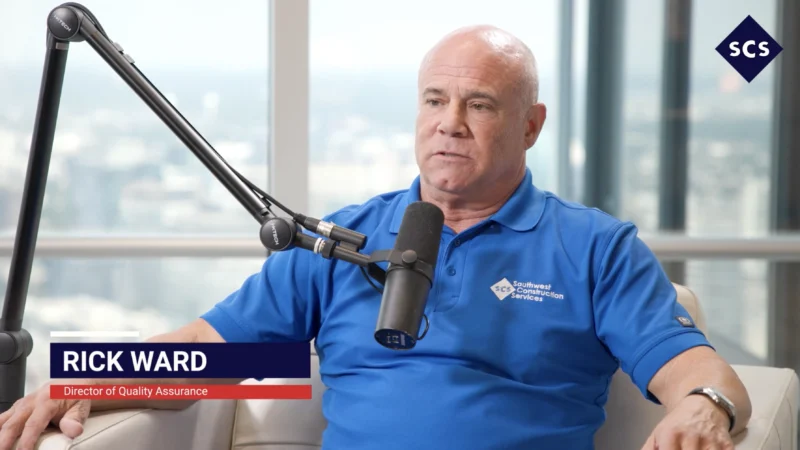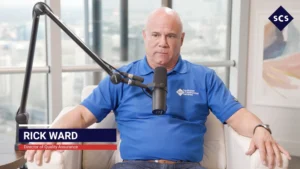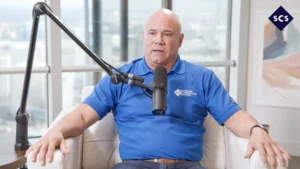A Delicate Approach to Durable Constructions with Dr. Armita Mohammadian of FDH Infrastructure Services
When driving around the country, you will find no shortage of large, durable structures and constructions that were built to stand the test of time: bridges, levees, and buildings that seem quite rugged. However, these structures are susceptible to the ravages of time and the elements. When attempting to maintain and inspect these projects, it requires an unexpectedly delicate approach.
On today’s podcast, MarketScale Host Sean Heath had a chat with Dr. Armita Mohammadian, Research Engineer with FDH Infrastructure Services. They discussed the necessity of a non-destructive inspection technology, the surprising use of an R&D department in an engineering firm, and the feeling of finding an elegant solution to a complex engineering puzzle. “The dispersive technique that is unique to FDH, is a very, very powerful technique and it gives a lot more comprehensive and accurate results,” Mohammadian said. “Just developing that technique and applying it to different structures makes us amazed all of the time.”
HIGHLIGHTS FROM THE EPISODE
Sean Heath: Can you tell me a little bit about the Army Corps of Engineers project that you worked on?
Armita Mohammadian: Yes. Sure. So we work closely with Army Corps of Engineers on assessing the dams. So by assessing the dams, I mean, by assessing the trunnion rods inside the radial gates of the dams. And we are helping them through different techniques of dispersive wave techniques and finite element modeling and other techniques to assess the tension inside the trunnion rods of radial gates in dams.
SH: I think I have a loose grasp of exactly why you would need research and development. I’m assuming, so you evaluate the problem then you design the steps that will help you solve that problem. Your team, the nondestructive team, does a field testing, you gather all the data, then you look at the cause and how extensive the problem is, then it comes to the structural engineering team that designs a solution so all hands are on deck there, and then you have a construction management that helps take that idea and that solution and turn it into a physical solution. So you’re pretty full service. What’s next? You must be busy 24 hours a day. There has to be an endless supply of projects for you to work on. What’s next for your R&D program?
AM: Yeah, that’s correct. So as I mentioned before, we come as a team, we have different groups, we work very closely together. We basically identify the problem, we evaluate the causes, and we evaluate what’s the extent, and then we collaborate with our field testing team. We design a testing program and we gather all the critical data that we need. And then when we identify the problem and we’ve identified the extent of the problem, we reach out towards our structural engineering team and they design basically modification if it’s needed. They sometimes design the replacement of the existing foundation or structure, and we try basically on an everyday basis to work together and help implement the solution and we usually have some alternative solutions for the clients.
But FDH is always pursuing new research projects. We are always approached by different clients with different situations and different problems. So we are doing a lot of partnership in development of new products and also we are actively participating in industry meetings and publications and conferences to keep ourselves updated and also to be able to use all the new technologies and all the tools that we have.
SH: It doesn’t sound like you really have an opportunity to get bored ever. What are the things that really excite you the most about your work?
AM: That’s very true. Actually, the nature of my work is like a very, very diverse project. I’m exposed to wide ranges of different types of projects and there’s a huge diversity in our clients so we never get bored here just because we face new problems every day, and the fact that it’s very customer-driven and the fact that we can help our customers to save money and basically strengthen the integrity of their structures and infrastructure that they manage or they own. It’s like a very, very unique thing, and definitely there’s not a job that you do the same thing every day. You do totally different things every day.
SH: So this final question really isn’t going to… it’s not going to be fair because you work in such a wide range of projects. But in your time in the R&D department there, is there a single project that you find yourself looking back at every once in a while and you kind of feel, you know, a little tinge of pride to say, “Yeah, that was a really tough problem”? Is there a particular project that you can tell me about that you want to put at the top of the resume?
AM: Yeah, actually, you know, the dispersive technique, the dispersive wave technique that is unique to FDH is a very, very powerful technique, and it gives a lot more comprehensive and accurate results and just developing that technique and applying it to different structures, that makes us amazed all the time. So we have this problem and we want to see if our techniques works on it. And when see that it works and we see that we have developed a new thing that works with our proprietary technique that is like the… actually that’s what I’m most excited about every day.
For the latest news, videos, and podcasts in the AEC Industry, be sure to subscribe to our industry publication.
Follow us on social media for the latest updates in B2B!
Twitter – @AECMKSL
Facebook – facebook.com/marketscale
LinkedIn – linkedin.com/company/marketscale








